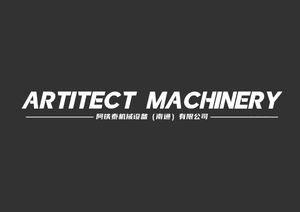In the demanding world of architectural sheet metal manufacturing, every percentage point of efficiency gained can translate directly into substantial cost savings and a stronger competitive edge. For many fabrication shops, labor costs represent one of the most significant operational expenses, particularly in highly skilled and time-consuming processes like metal folding. Are you constantly looking for ways to streamline your workflow and reduce overhead without compromising on the precision and quality that define your craft? The answer often lies in embracing advanced technology, specifically the evolution of architectural metal folding equipment.
Imagine a scenario where your production line operates with unprecedented efficiency, requiring fewer hands on deck while consistently delivering superior results. This isn't a distant dream; it's the reality our clients are experiencing daily. By strategically integrating cutting-edge solutions like our automatic folding machine, they've managed to significantly cut down on labor expenses, reallocating valuable human resources to more complex or supervisory tasks.
This article will delve into real-world examples, illustrating how leading manufacturers have revolutionized their operations and achieved remarkable labor cost reductions by adopting sophisticated automatic folding machine technology. We'll explore the specific mechanisms through which these innovations, including our highly-regarded double folding machine, not only boost productivity but fundamentally reshape your financial landscape, proving why the right investment in architectural metal folding equipment can truly be the best double folding machine for your bottom line. Discover how automation can empower your business to save more, produce more, and thrive.
The Hidden Costs of Manual Metal Folding
While traditional bending methods have long been the backbone of sheet metal fabrication, they carry a silent, yet significant, burden of hidden costs that directly impact profitability. For architectural sheet metal manufacturers striving for peak efficiency, these less obvious expenses can erode margins, making the true cost of manual operations far higher than meets the eye.
Firstly, there's the direct labor cost, which extends beyond just hourly wages. It encompasses overtime pay, benefits, and the significant investment in training and retaining skilled operators capable of handling complex bends on conventional architectural metal folding equipment. As projects become more intricate and deadlines tighter, the pressure mounts, often necessitating costly overtime to keep pace.
Beyond direct wages, manual processes are prone to higher error rates and material waste. Each manual repositioning of a large metal sheet on a press brake carries the risk of misalignment, incorrect angles, or surface damage. These errors not only lead to discarded material but also require additional labor time for rework, inspection, and often, complete re-fabrication. Such inefficiencies directly inflate production costs and delay project completion, impacting client satisfaction and your reputation.
Furthermore, consider the setup and changeover times. Traditional machines, even robust architectural metal folding equipment, demand considerable time for tool changes and precise calibrations when switching between different profiles or materials. This non-productive time, though necessary, represents lost production capacity and, consequently, lost revenue. It ties up valuable skilled labor in tasks that don't directly contribute to output.
Finally, the physical demands and safety risks associated with manual handling of heavy metal sheets can lead to worker fatigue, potential injuries, and increased insurance premiums. Employee turnover, driven by strenuous work conditions, also adds to recruitment and retraining costs. Collectively, these factors paint a clear picture: while manual folding has its place, its accumulated hidden costs make a compelling case for re-evaluating operational strategies. It highlights a critical need for solutions that not only enhance precision but also fundamentally reduce the labor burden, paving the way for technologies like the automatic folding machine.
The Power of Automation: How Automated Folding Machines Drive Savings
Having examined the often-overlooked expenses associated with manual metal folding, it becomes clear that true efficiency and cost savings lie in intelligent automation. This is precisely where modern architectural metal folding equipment makes a profound impact, fundamentally reshaping labor costs from a significant overhead into a manageable, optimized expense.
The primary mechanism by which an automatic folding machine drives savings is the drastic reduction in direct labor dependency. Unlike traditional press brakes that often require multiple operators for a single task—especially with large or complex panels—automated systems can operate with minimal human intervention. A single operator can oversee the machine, or in some advanced setups, the machine can run autonomously for extended periods, freeing up valuable skilled personnel to focus on higher-value activities such as design, quality control, or complex finishing work. This reallocation of labor means you're maximizing your human capital, not just maintaining it.
Furthermore, an automatic folding machine significantly reduces the time spent on setup and changeovers. Advanced software and automated tooling adjustments allow for rapid transitions between different jobs. What might take an hour or more with conventional machinery can be reduced to mere minutes. This increased uptime directly translates to higher production volume per shift with the same or even fewer staff, leading to a substantial boost in overall output and, consequently, lower unit costs.
Consider the capabilities of a double folding machine, for instance. By simultaneously executing two bends, it halves the processing time per piece compared to single-fold methods. This exponential increase in speed directly impacts labor efficiency. Not only is the machine working faster, but the need for constant manual manipulation and repositioning is virtually eliminated. This inherent speed, combined with unwavering precision, means fewer errors, less material waste, and no need for labor-intensive rework cycles, which were significant cost drains in manual operations.
For many of our clients, investing in an automatic folding machine has proven to be the best double folding machine choice for their specific needs, precisely because of these cascading benefits. It's not just about reducing the number of hands on the machine; it's about optimizing every aspect of the bending process, from raw material to finished product, to achieve maximum output with minimal labor input. This strategic shift transforms labor costs from a fixed burden into a flexible asset that scales with your production demands.
